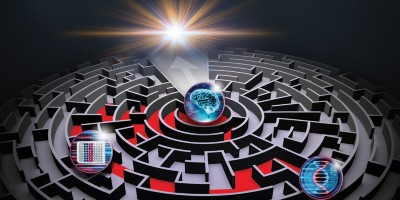Migraine sufferers experience pounding headaches, which sometimes are preceded by a visual aura. Now Bolay et al. show that cortical-spreading depression, the cause of the aura, activates trigeminal afferents, which act to cause inflammation of the pain-sensitive meninges, generating the headache. (pages 136–142)

Bob Crimi
References
Terwindt, G.M. et al. Involvement of the CACNA1A gene containing region on 19p13 in migraine with and without aura. Neurology 56, 1028–1032 (2001).
Blau, J.N. Migraine: theories of pathogenesis. Lancet 339, 1202–1207 (1992).
Lauritzen, M. Pathophysiology of the migraine aura. The spreading depression theory. Brain 117, 199–210 (1994).
Bolay, H. et al. Intrinsic brain activity triggers meningeal afferents in a migraine model. Nature Med. 7, 136–142 (2002).
Hadjikhani, N. et al. Mechanisms of migraine aura revealed by functional MRI in human visual cortex. Proc. Natl. Acad. Sci. USA 98, 4687–4692 (2001).
Bowyer, S.M., Aurora, K.S., Moran, J.E., Tepley, N. & Welch, K.M. Magnetoencephalographic fields from patients with spontaneous and induced migraine aura. Ann. Neurol. 50, 582–587 (2001).
Moskowitz, M.A. & Macfarlane, R. Neurovascular and molecular mechanisms in migraine headaches. Cerebrovasc. Brain Metab. Rev 5, 159–177 (1993).
Edvinsson, L. & Goadsby, P.J. Neuropeptides in the cerebral circulation: relevance to headache. Cephalalgia 15, 272–276 (1995).
Kaube, H., Herzog, J., Kaufer, T., Dichgans, M. & Diener, H.C. Aura in some patients with familial hemiplegic migraine can be stopped by intranasal ketamine. Neurology 55, 139–141 (2000).
Ebersberger, A., Schaible, H.G., Averbeck, B. & Richter, F. Is there a correlation between spreading depression, neurogenic inflammation, and nociception that might cause migraine headache? Ann. Neurol. 49, 7–13 (2001).
Hill, R. NK1 (substance P) receptor antagonists—why are they not analgesic in humans? Trends Pharmacol. Sci. 21, 244–246 (2000).
Author information
Authors and Affiliations
Rights and permissions
About this article
Cite this article
Iadecola, C. From CSD to headache: A long and winding road. Nat Med 8, 110–112 (2002). https://doi.org/10.1038/nm0202-110
Issue Date:
DOI: https://doi.org/10.1038/nm0202-110
- Springer Nature America, Inc.
This article is cited by
-
Mechanisms of migraine as a chronic evolutive condition
The Journal of Headache and Pain (2019)
-
A dominant-negative mutation in the TRESK potassium channel is linked to familial migraine with aura
Nature Medicine (2010)
-
Pathophysiology of headache
Current Neurology and Neuroscience Reports (2003)


